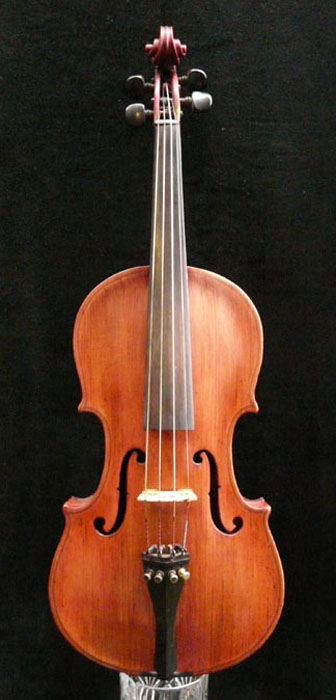
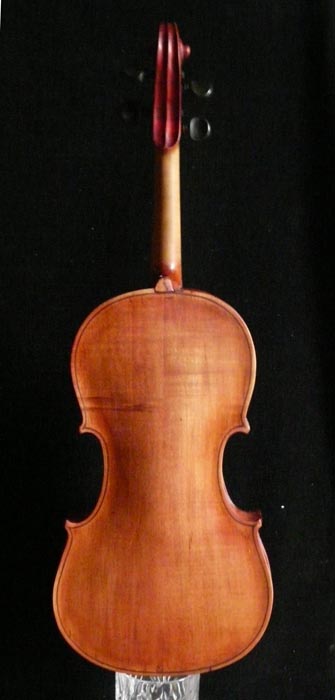
a Maker's Orphan |
an 18th century wonder |
This reconstructed and refinished violin was found on the consignment wall of my Pennsylvania luthier in 1998. It was a dark, opaque brown and looked like shoe polish was applied rather than varnish. The bridge was warped and the neck set low and at a cant, yet the build and the shape were interesting enough for me to ask for a bow. In spite of its condition, the sound was bold and sympathetic. I bought it, and after the luthier glued a crack or two, planed the fingerboard, I played it like that for three years. Then I had the neck reset to the proper angle and alignment by another luthier and gave it a 'facelift' by carefully stripping the ugly finish and revarnishing it with an alcohol stain entrained in an oil medium made for instruments. What you see now is a uniquely handsome fiddle with a bold and captivating sound. |
 |
 |
The red/orange table is a fairly tight grained spruce, purfling nicely inlaid with elegant corners and beestings. The back is a two piece maple, somewhere between slab cut and quartersawn with slightly visible flames. The parabolic arch of the heel button tells me it could be Tyrolean based on an Amati pattern. However, the wide, upright, 'cat in the fiddle' style f holes look very English or Scottish. My guess is it's a late 18th or very early 19th century piece. |
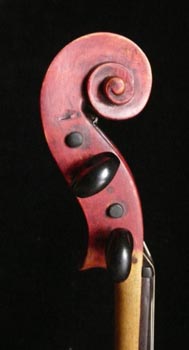 |
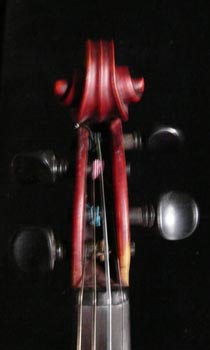 |
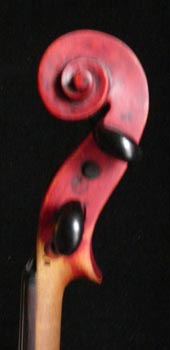 |
The scrollwork is decently carved. The smallish eye and 'drooping' lobes of the volute are indicative of a venerable age. The peg slots were bushed at some point and pegs hold well. |
The height of string off the fretboard is just right for ease of play and max volume. It's strung with old Pirastro Obligatos and fine tuners are on every string. Thomastic Dominants (a slightly lighter guage) would do well on this when you decide to change strings. |
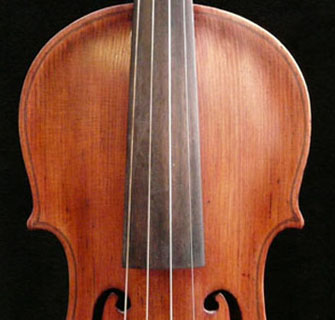 |
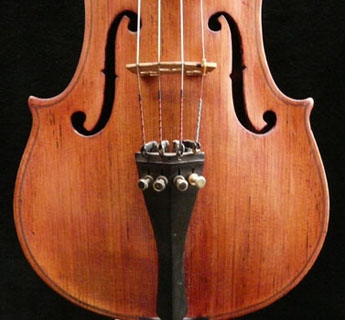 |
The overall shape and the wide, upright style f holes indicate a well practiced maker. The table rises gracefully off the channel, giving it a certain 'muscularity'. The wings are lightly fluted. |
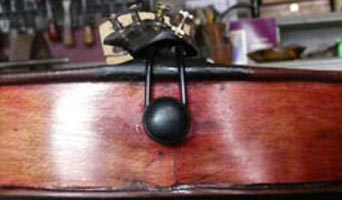 |
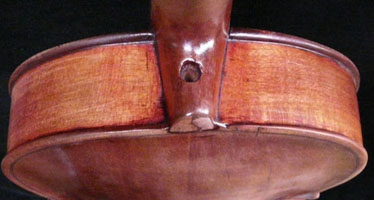 |
In the neck resetting, an old, twisted, brass slot head screw holding the misaligned neck to the block was revealed. The hole in the heel is from the screw extraction. It is now filled and blended into the heel. Above left, The ribbing was reclosed at the tail block seem and is holding well. |
MEASURMENTS |
SOUND & PLAYABILITY |
return to the gallery page by clicking the link below http://stnichsigns.com/Makers'Orphans.html |